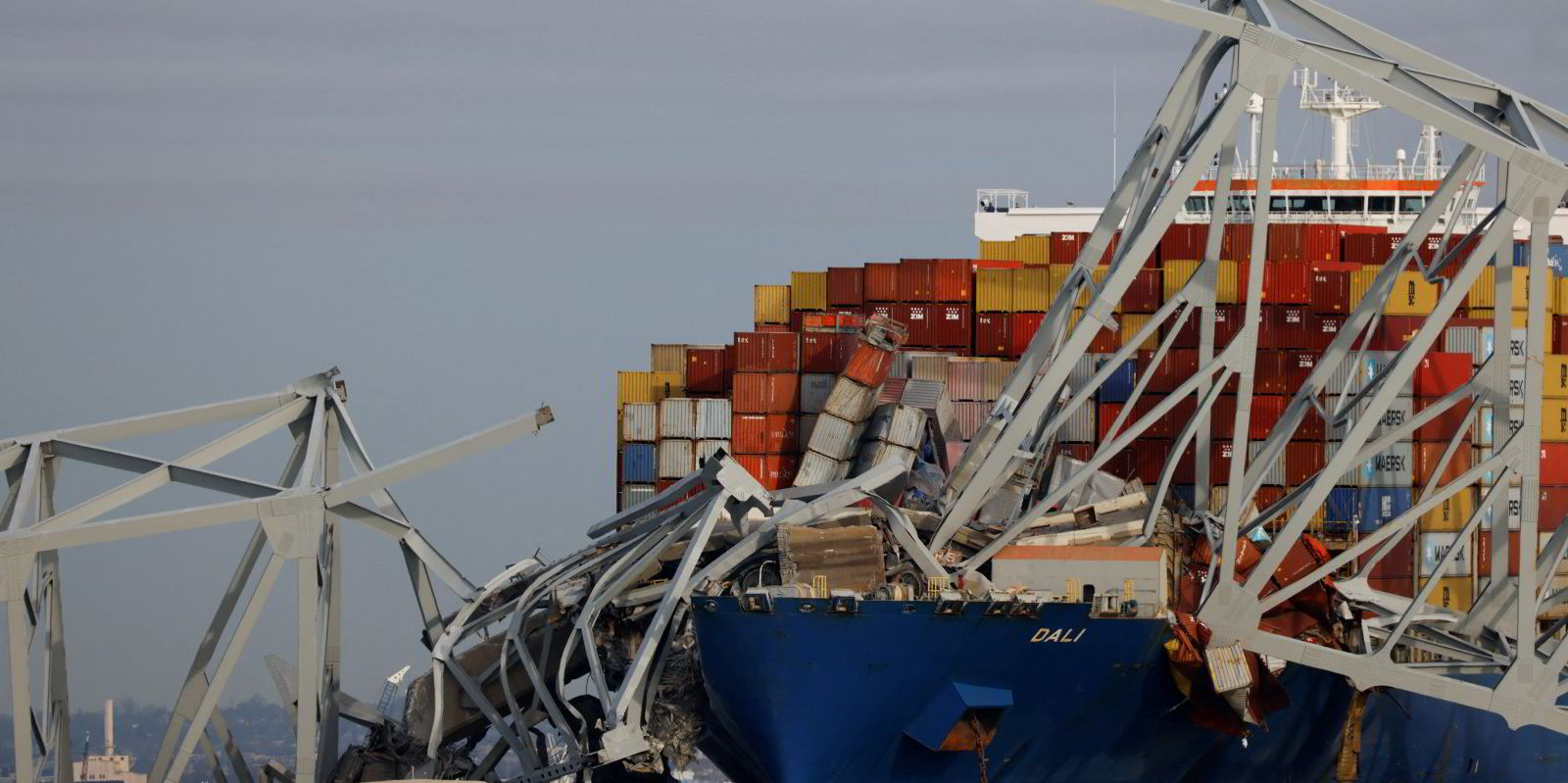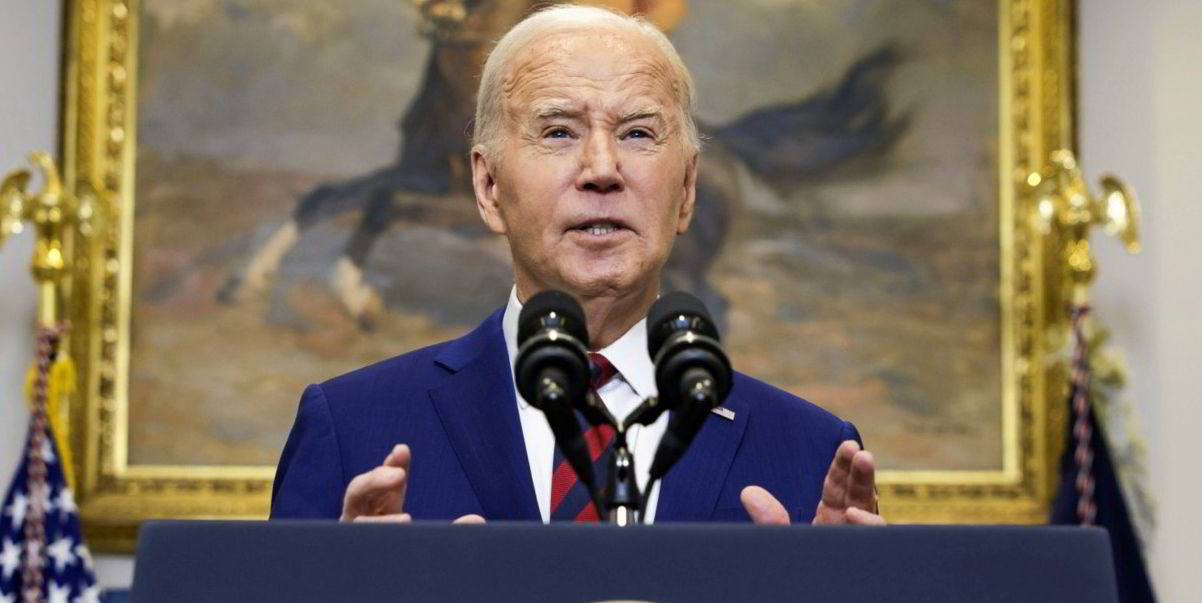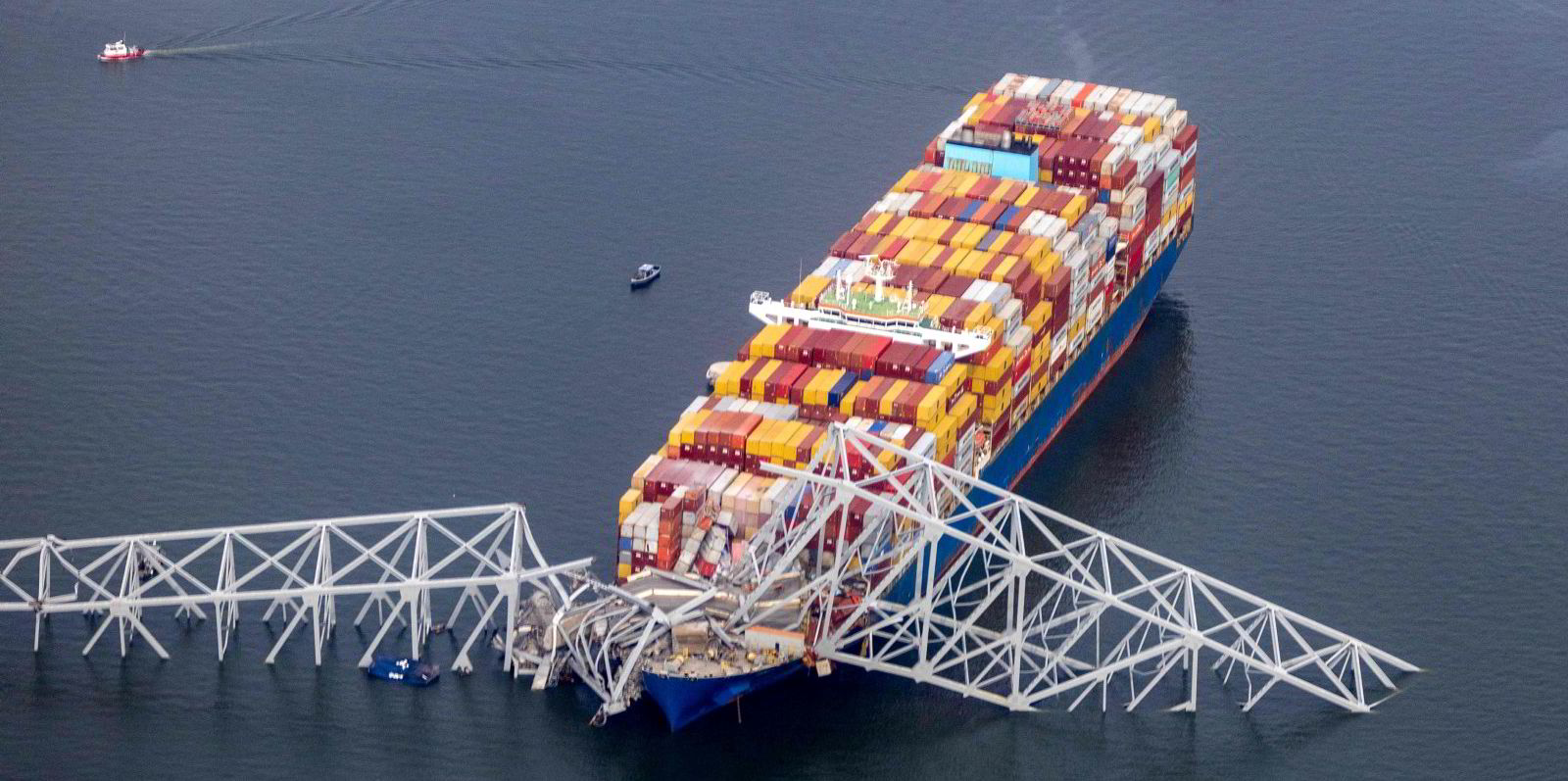Rescue workers were continuing to search for those missing after the Maersk-chartered boxship Dali destroyed the Francis Scott Key Bridge in Baltimore on Tuesday.
But six construction workers who were on the bridge at the time are now presumed dead, their employer said.
The 9,962-teu Dali (built 2015), owned by Grace Ocean in Singapore, suffered a reported loss of propulsion in the early hours of yesterday.
Two people have been recovered from the Patapsco river.
Baltimore fire department officials said at least six people were still missing.
Jeffrey Pritzker, a senior executive at Brawner Builders, said his six staff were now thought to have died, The Guardian reported, due to the water’s depth and the length of time that had now elapsed since the accident.
Pritzker added his crew had been working in the middle of the bridge.
“This was so completely unforeseen,” the executive said. “We don’t know what else to say. We take such great pride in safety, and we have cones and signs and lights and barriers and flaggers. But we never foresaw that the bridge would collapse.”
The Baltimore Banner reported that the workers were from El Salvador, Guatemala, Honduras and Mexico.
They are aged in their 30s and 40s, with spouses and children.
One of the people pulled from the water was taken to hospital with severe injuries and in a critical condition.
The temperature in the river was about 8℃ at the time of the crash.
In 2016, the Dali allided with a berth at the Belgian port of Antwerp during unmooring, a Vessel Finder report said at the time.
The ship, managed by Synergy Marine, was also cited last year for propulsion issues during a port state control safety inspection in Chile, but was not detained.
As TradeWinds reported yesterday, major shipping markets are braced for impact following the collapse of the bridge.
So far this year, Baltimore has been the largest US coal export port in terms of vessel loadings and the 22nd-largest exporter globally. The nearby hub of Hampton Roads — which comprises the ports Newport News, Virginia and Norfolk — is bigger.
Analysis by Kpler has identified about a dozen bulkers that were expected to load coal at Baltimore’s two terminals before the end of next week.
“These liftings will have to be postponed until the shipping lane has been cleared,” Madeleine Overgaard, Kpler’s dry market data manager, told TradeWinds.
Container shipments to the US East Coast face months of disruption following the disaster.
Although no container vessel has been trapped inside Baltimore’s inner port — other than the Dali — access to the terminals is expected to be limited or even impossible for weeks or months, according to Alphaliner.
XChange Market Intelligence said the port generates nearly $3.3bn in total personal income and supports more than 15,000 direct jobs, with an additional 139,000 jobs connected to port work.
Follow TradeWinds’ coverage of the disaster here






